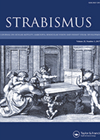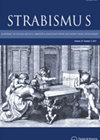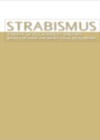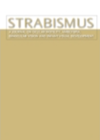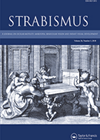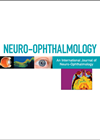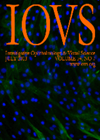
Journal Reviews
Genetic profiles of primary strabismus
The authors explore the pedigree analysis of familial cases of primary concomitant strabismus (PCS) to unravel the genetic determinants of this strabismus. Of 2301 cases of PCS, 39 (1.7%) had familial clustering. This study recruited 18 families with esotropia and...
Choroidal thickness in strabismus and amblyopia
The authors examined the effect of exotropia, esotropia, anisometropic amblyopia and hypermetropia on choroidal thickness in a prospective cross section study. The study included 100 patients and 20 controls with a mean age of 8.5±2.9 years; 61 female and 59...
Medial rectus surgery with development delay
The long-term results of bilateral medial rectus surgery are evaluated in 42 children with development delay. Mean age pre-surgery was 2.9 years with a mean follow-up of 4.6 years. Mean angle of esotropia was 44.29±13.9PD; 57% achieved surgical success; 31%...
Factors indicating better stereopsis for APAET
The purpose of this study was to determine preoperative factors that affect postoperative stereopsis in patients with acquired partially accommodative esotropia (APAET). This retrospective study was undertaken over a five-year period. Eighty-four subjects had surgery for APAET and 57 met...
PALs use for convergence excess esotropia
This retrospective study includes a disparate group of 39 esotropic patients with an accommodative element from two different clinics with differing prescribing practices. Seven children were excluded due to previous treatment or insufficient follow-up. In all patients single vision glasses...
Associations of esotropia with shunts
This study explored the characteristics and outcomes of children with esotropia and ventriculo-peritoneal (VP) shunt placement due to hydrocephalus. The authors conducted a retrospective study of 16 patients (nine female, seven male) aged three months to 5.6 years (mean 17...
BT outcome for CP and ET
The authors evaluate the clinical outcome of botulinum toxin (BT) injection in the correction of esotropia in 44 patients with cerebral palsy (CP). BT was injected under general anaesthesia without EMG guidance. Of the children, 47.7% were male and mean...
A case series of acquired esotropia in cerebellar disease
Acquired esotropia in cerebellar disease is well described but under-recognised. The pathogenesis of cerebellar esotropia is controversial. It is suggested it may be a result of disruption to central vestibular pathways. This article reports a case series of seven adults...
Glasses or not?
In this excellent review article, the authors discuss how some hyperopes avoid strabismus but also ask why the youngest infants escape strabismus and older patients go on to decompensate. The review considers a number of related aspects and their inter-relations...

